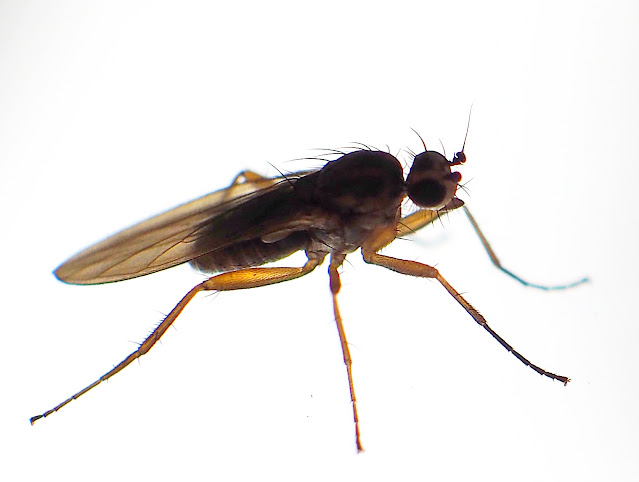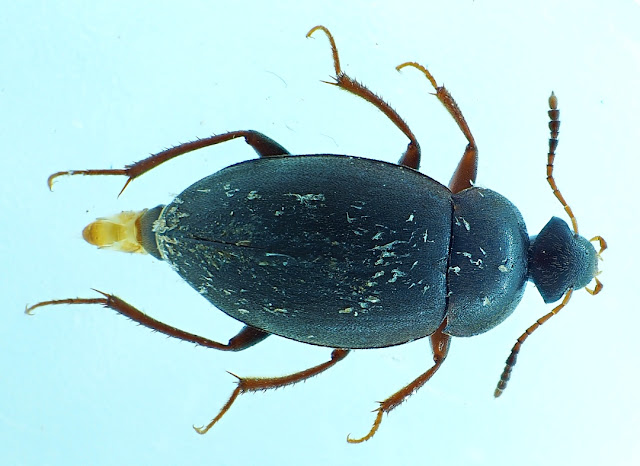We're travelling more frequently at the moment as we explore possible places to live south. Not the best time of year to do it, the wind the other day fortunately subsided just in time for our ferry to run. It was neat to hear and see Mistle Thrushes and Great Spotted Woodpeckers. Star of this trip away, aside from younger daughter's 21st birthday was this fabulous shield bug.
 |
| Dolycoris baccarum, Hairy Shieldbug. |
I initially misidentified this as Brassy Shieldbug but the antennal markings set me right. Both are a similar colour dorsally in the winter. We visitied Tentsmuir NNR and I found the beast under some Peltigera lichen on inland dunes. Clearly dormant, photographed, I covered it back up again. Also a couple of beetles and a diptera sp from the tideline, not yet identified. The diptera shouldn't be too hard I suspect.
 | |
| I probably ought to know what this is... perhaps it's |
The above ID is incorrect, IA (thank you) has suggested Heterocheila buccata which seems to fit much better.
Also, these cases made of bits of shell were quite common amongst the strandline seaweed that was washed up.
 |
| Case of some beast or other, probably a worm. |
I haven't photographed the beetles yet, they were tiny from the tideline, hopefully of interest. Tentsmuir is a fabulous place but if you go by car to the main car park make sure you have 2x £1 coins for the barrier. The pancake hut is closed on Mondays and Tuesdays, so best go another day, the pancakes are good.
Back here in Orkney it is noisy time with the Oystercatchers suddenly arriving inland in force, well over 100 hanging around The Shunan now. Also the first Black-headed Gulls of the year. And an elusive Kestrel, seen once from the car but not again.
 |
| Oystercatchers. |
You can't really do nocmig here because the sound recordings are so busy it takes hours to go through them, what with Oystercatcher, Curlew and Greylags calling and flying all night. It is a time of year I like very much, with the waders all returning and sorting out their territories.
An early flowering Marsh Marigold on 11/02/2023.
 |
| Marsh Marigold, flowering rather early. |
I had a meeting with a Species on the Edge coordinator the other day. Chrysolina latecincta is one of the species however, I'm not sure what could be done to protect or encourage this fancy beetle. What was encouraging was that the brief might be wider than the listed species and that rare and much more fragile things like Hydrothassa hannovariana might get some attention.
I did finally manage to dissect out the paramere of the Anthocoris sp that I caught the other day, it does indeed seem to be Anthocoris confusus, which is new to me and I think for the county.
 |
| Paramere, Anthocoris confusus. |
Turning over one of my favourite stones, there's nearly always something of interest beneath, it's at the top of the birdcrop field. A Catops, a big one.
 |
| Catops nigricans, NFM. It was all of 5mm+ |
And this from the kitchen window was identified as Lonchoptera sp. There are not many species but unfortunately it was on the inside of the kitchen window and I didn't catch it at the time, it has not reappeared.
 |
| Lonchoptera sp (thanks BM). |



























